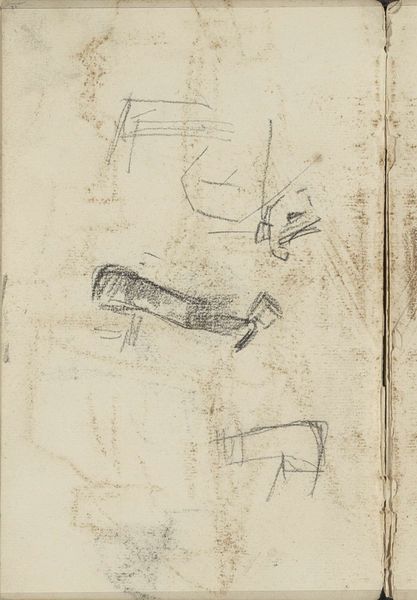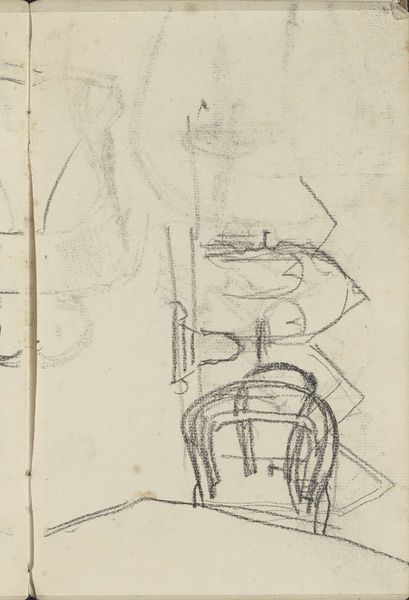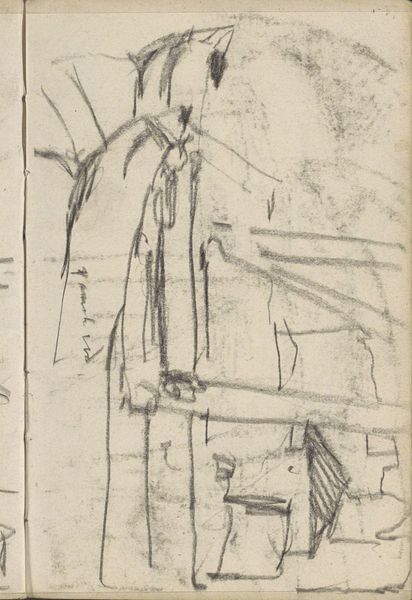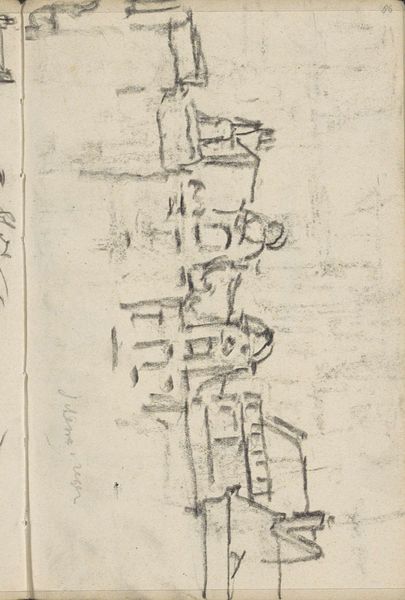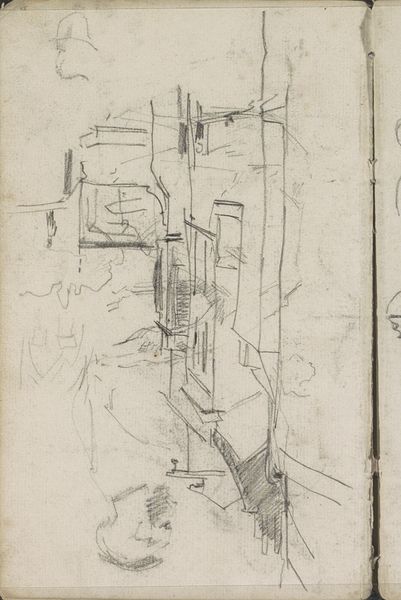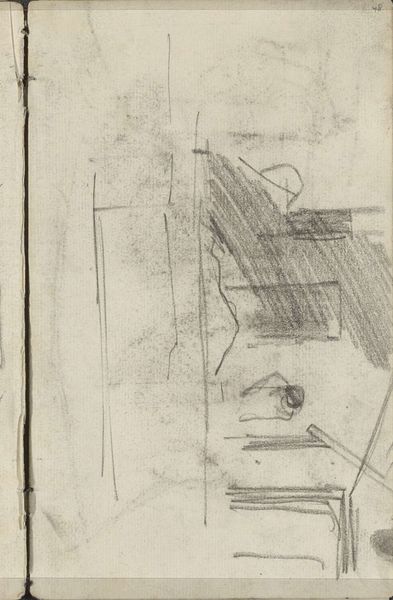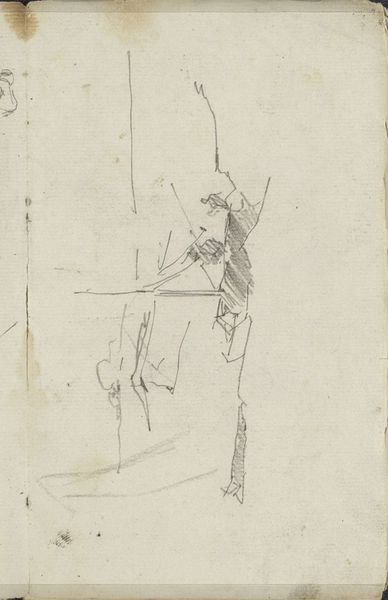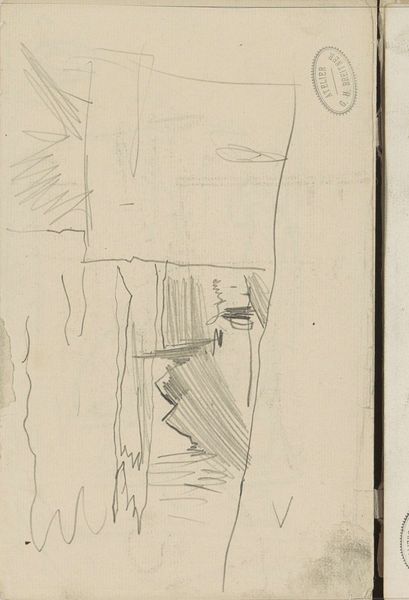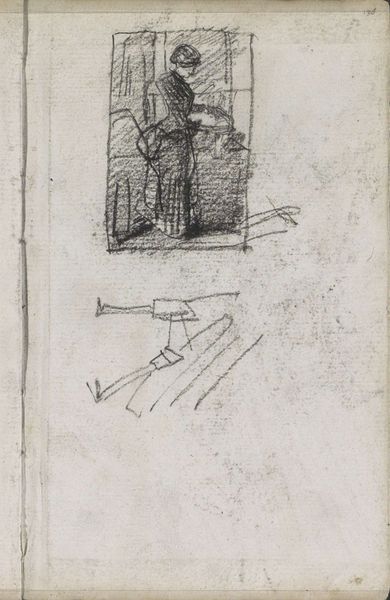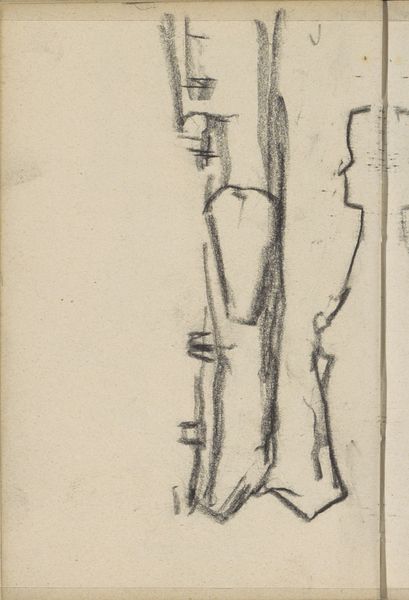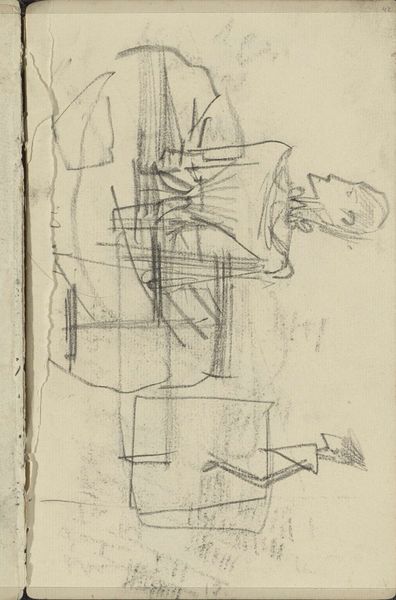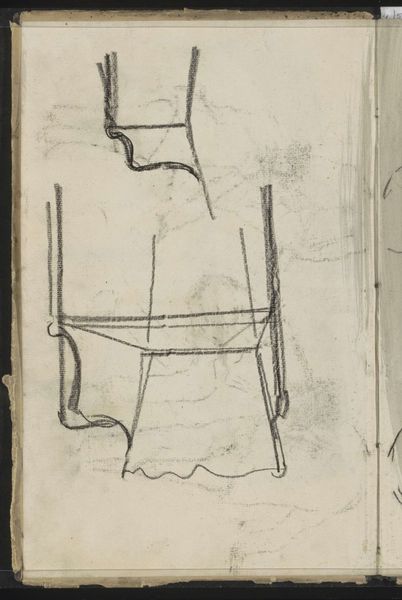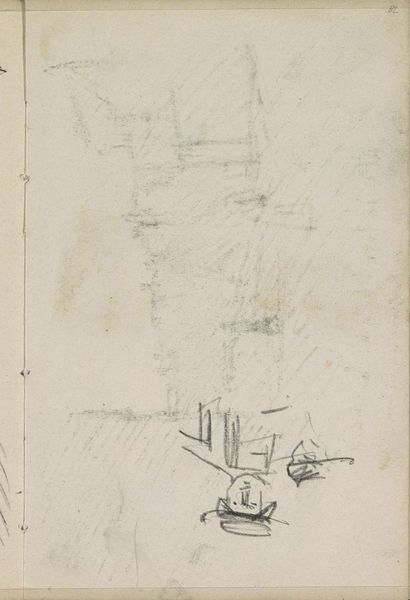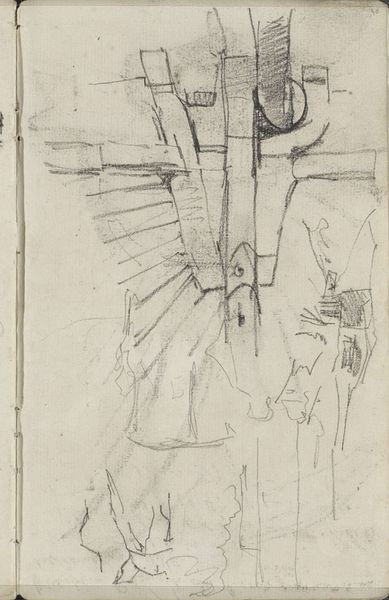
drawing, pencil
#
drawing
#
aged paper
#
toned paper
#
sketch book
#
personal sketchbook
#
idea generation sketch
#
sketchwork
#
geometric
#
pen-ink sketch
#
pencil
#
line
#
sketchbook drawing
#
storyboard and sketchbook work
#
sketchbook art
Copyright: Rijks Museum: Open Domain
Curator: Welcome. Here we have "Onderstel, mogelijk van een kar," or "Chassis, possibly of a cart," a sketch created by George Hendrik Breitner, sometime between 1886 and 1923. It’s currently held here at the Rijksmuseum. Editor: My first impression is of transience. The sketch is light, almost ethereal, and the muted tones of the aged paper add to that sense of something fleeting, quickly captured. Curator: Absolutely. These sketchbook drawings offer glimpses into Breitner's artistic process. His positionality as a man photographing and sketching working-class subjects, especially women, raises ethical questions about representation and power dynamics. How do we interpret these sketches in light of contemporary discussions about the male gaze and the exploitation of vulnerable communities? Editor: True, the lines are simplified to basic forms; mostly geometric. Note how Breitner uses the pencil to give weight and volume, or simply uses line to define objects. See how the strokes build up these provisional shapes? There’s almost a cubist fragmentation happening, especially in how he defines the spokes of what I assume is the wheel. Curator: He worked amidst profound social and political change in the Netherlands. Breitner's focus on everyday life in Amsterdam connects with the burgeoning socialist movement and its concern for the working class. He captures their lives, offering, perhaps, an unfiltered perspective on their world, which often intersected with the very vehicles suggested in the sketches. The sketch hints at industry, labor, and the role of these often-overlooked people who rely on such carts. Editor: What I see are the rudiments of industrial aesthetic; the raw, functional, unglamorous bones. He highlights basic geometric shapes. What matters are essential form, spatial relationships, balance and asymmetry. Curator: This sketch reminds us to consider the artist's social consciousness and the impact of their work on public perceptions of marginalized groups. The cart in Breitner’s drawing connects the worker, literally and figuratively, to his means of living, offering a poignant social commentary. Editor: Considering this sketch, it underscores for me that visual art speaks an elemental language, doesn't it? Perhaps free of rhetoric, propaganda, all else besides formal relationships in space. I love the lack of sentimentality. Curator: Breitner's drawing, seen through different lenses, has truly offered different and valuable perspectives, which may open our own way of thinking.
Comments
No comments
Be the first to comment and join the conversation on the ultimate creative platform.
